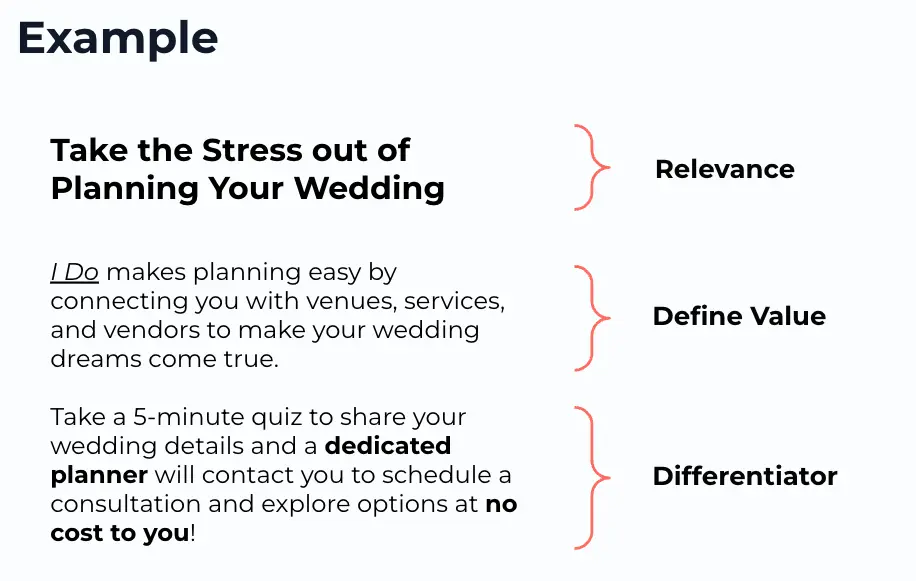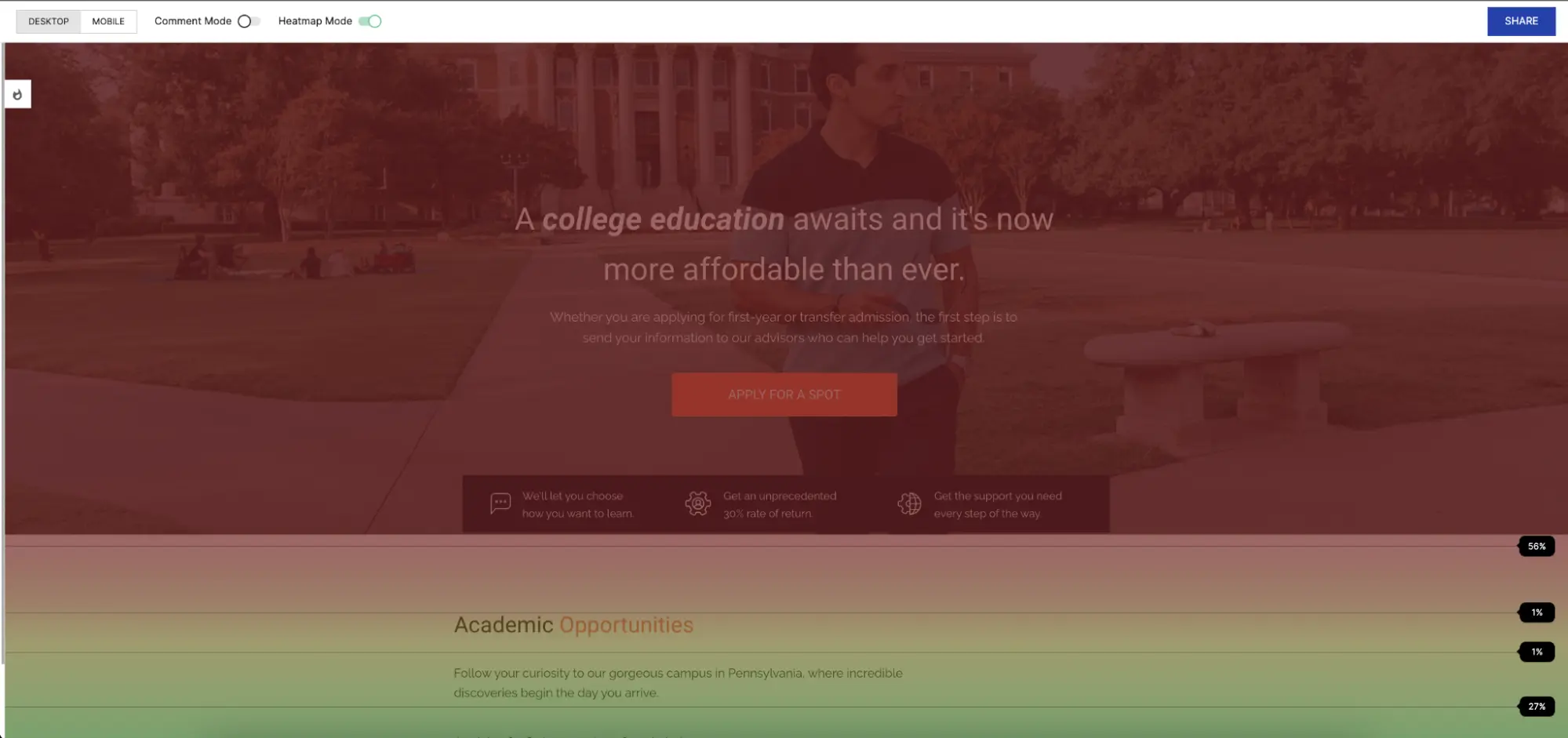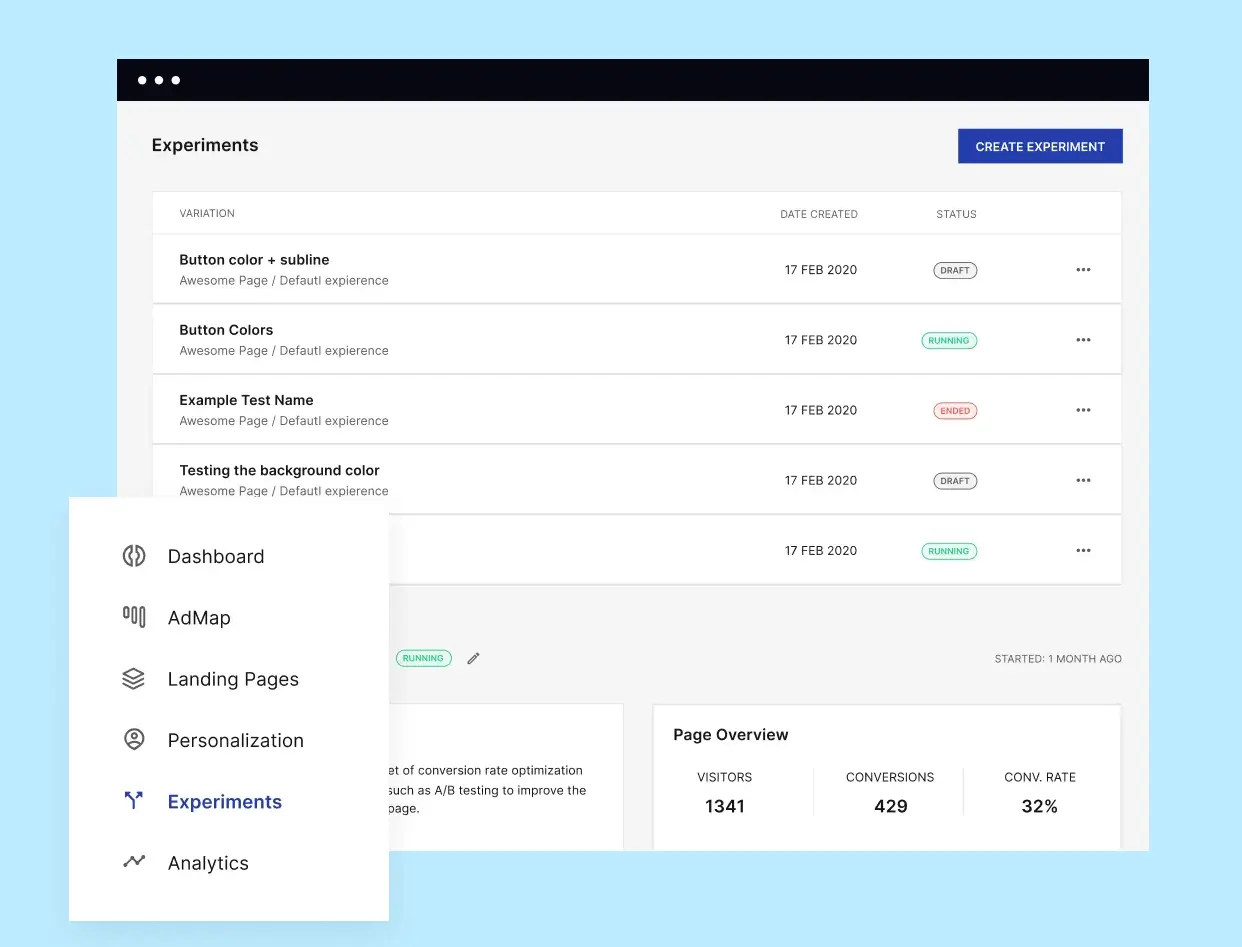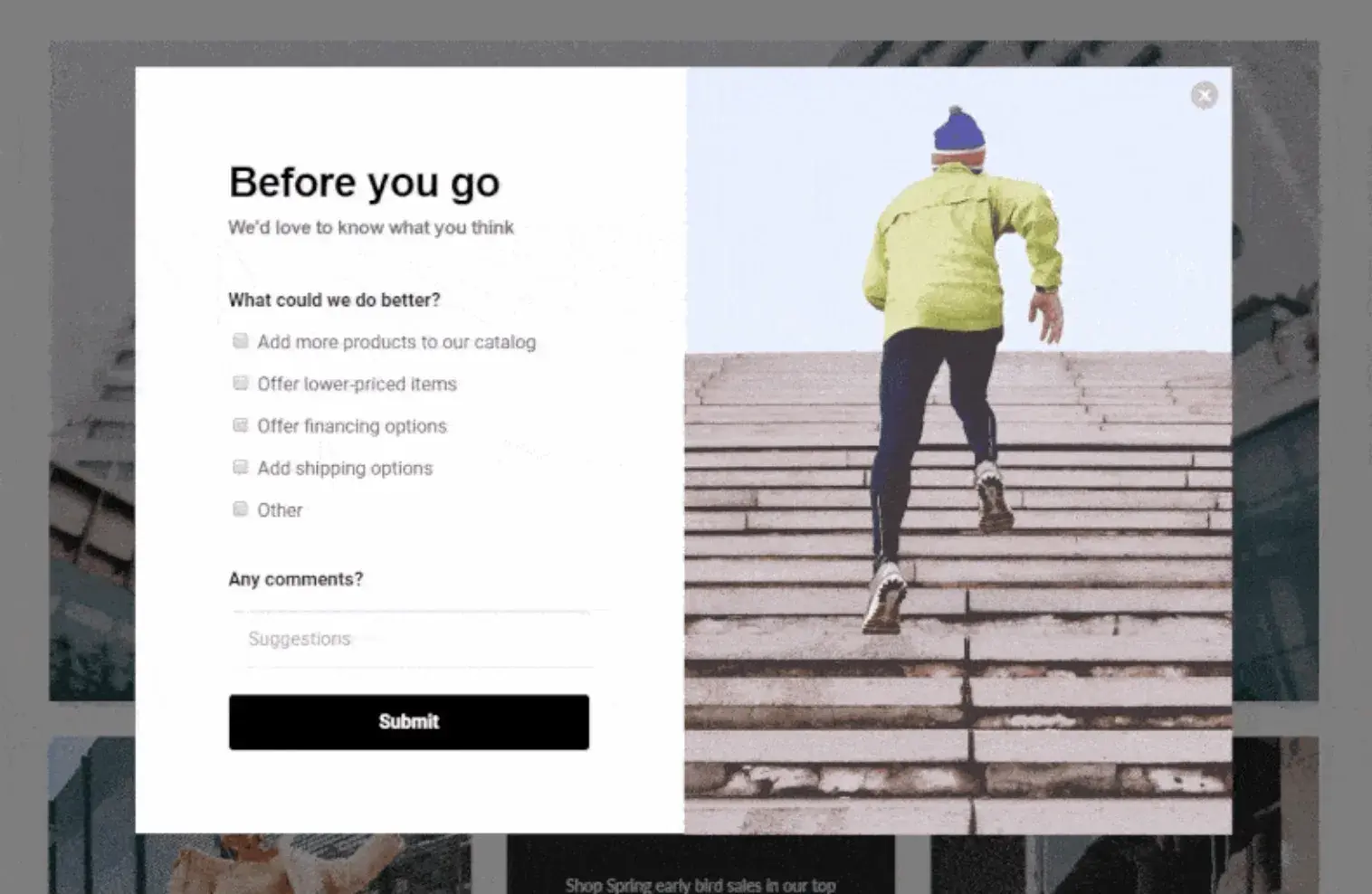CRO audit checklist
- Identify the conversion actions that matter to your business
- Focus on the touchpoints that matter
- Understand user behavior with heat maps and A/B tests
- Gather voice of customer (VoC) data
- Put your data into action
As marketers, we often find ourselves scratching our heads over insufficient conversions.
Imagine an e-commerce website with 20,000 monthly visitors but only a 1% conversion rate. It means only 200 of its visitors become paying customers each month. A CRO audit can help reveal hidden issues with the website, such as unclear call-to-action buttons, non-intuitive navigation, distracting elements, and more.
Did you know that the average conversion rate for a website is 2.3%? If you’re below that benchmark, it’s probably time for a CRO audit.
What is a CRO audit?
A conversion rate optimization audit is an in-depth examination of your website, landing page, or app that aims to uncover any barriers in the way of conversions.
Are you getting adequate traffic, but the conversion numbers are down? Are visitors abandoning their carts? Is your bounce rate high?
These questions can keep marketing teams wide awake at night.
In fact, according to research, only 22% of companies are actually satisfied with their conversions. The rest of us mortals are on a perpetual optimization quest for conversions.
By systematically analyzing user behavior, website performance, and conversion paths for page visitors, a CRO audit provides a roadmap to improving your website’s effectiveness and ultimately boosts your bottom line.
Why your business needs a CRO audit
Having a website or landing page that looks good is no longer enough. To thrive, your business needs to ensure that visitors are converting into paying customers. This is where a CRO audit comes into play. It helps you:
Maximize your ROAS
Return on Ad Spend (ROAS) is a crucial metric for any marketing campaign. A CRO audit helps you maximize your ROAS by pinpointing areas within your website or marketing funnel that need improvement, such as a broken thank you page link. When you optimize these areas, you get more value from every marketing dollar spent, driving higher revenue and making more efficient use of your budget.
Improve user experience
A thorough CRO audit evaluates the user experience at every funnel touchpoint, from landing pages to checkout processes. By identifying and rectifying issues that come in the way of a seamless user journey, you can significantly enhance the overall user experience.
Smoother navigation, faster load times, and intuitive design all contribute to keeping visitors engaged and moving them toward conversion. Here you can read more about conversion rate optimization.
Clean up your marketing pixels. Ensure you are using the latest versions of tracking scripts and remove those you don’t need anymore. Keeping outdated pixels can not only cause page-loading delays but also create vulnerabilities and security risks.
Uncover conversion barriers
One of the primary goals of a CRO audit is to uncover factors that prevent users from converting, such as:
- Non-responsive page design leading to poor user experience on mobile devices
- Underwhelming product images or descriptions
- Lack of clear and compelling calls to action
- Hidden or complex checkout processes
- Limited payment options
- Lack of trust signals, such as customer reviews or security badges
- High shipping costs or long delivery times
- Mandatory account registration for checkout
- Overwhelming amount of choices which can cause decision paralysis
- Intrusive pop-ups or advertisements that disrupt the user experience
- Poorly designed forms
By identifying and addressing these issues, you remove friction points that could cause potential customers to abandon their journey, thus increasing your conversion rates.
Evaluate your landing page value proposition to make sure it is not only in alignment with the ad but also with your target audience. When crafting a value proposition, try answering these three questions for your target audience:
- Relevance: What is the customers’ problem?
- Define Value: How do we solve that problem? What are the benefits of our service?
- Differentiator: Why do they want to choose us over our competitors?
Gain insights into marketing campaign effectiveness
Analyzing conversion rates at different stages of the customer journey can provide answers to numerous questions.
Are your ads bringing in traffic but failing to convert? Is there a particular stage in the conversion process where users drop off? A CRO audit provides the data needed to understand these patterns, allowing you to fine-tune your strategies for better results.

For example:
- A clothing brand runs multiple marketing campaigns across different channels. A CRO audit reveals that while social media ads drive significant traffic, email marketing campaigns have higher conversion rates.
- By reallocating more budget towards effective email campaigns and refining social media strategies, the company improves overall campaign performance and ROI.
Identify industry best practices and competitive benchmarks
By understanding where you stand and what top-performing companies are doing right, you can implement strategies that differentiate your brand. This drives greater conversion success and positions your business as a leader in your field.
Example:
- A travel platform wants to improve its booking conversion rate.
- A CRO audit reveals that the platform lacks personalized recommendations compared to its competitors. Implementing this feature and adding dynamic pricing on top allows the travel platform to boost bookings and gain a competitive edge.

Stay agile and responsive to trends
By continuously assessing and adjusting your website and digital marketing efforts, you ensure that they remain aligned with the needs and expectations of your target audience, stay on top of trends, and maintain relevance and effectiveness over time.
Consider the following CRO audit scenario:

Prioritize your optimization efforts
Finally, a CRO audit provides actionable insights and measurable results, allowing you to focus on areas with the most significant impact and leading to more efficient use of resources. This targeted approach ensures that your optimization initiatives yield tangible outcomes and sustainable growth.
5 steps to performing a conversion rate optimization audit
Step 1: Identify the conversion actions that matter to your business
Setting clear conversion goals and defining your micro and macro conversions provides a solid foundation for a proper conversion audit.
Understand which conversions to track and set clear goals
Pinpoint which conversions are the most valuable for your business. This step involves analyzing your business model and customer journey to determine the actions that lead to meaningful outcomes.
Clear conversion goals help measure success and guide your optimization efforts. Imagine you run an online bookstore. Before starting a CRO audit, you need to decide which conversions to track. For instance:
- Primary conversion goal: Completing a purchase
- Secondary conversion goals: Adding a book to the cart, signing up for a newsletter, or creating a user account
Setting these goals allows you to focus on optimizing actions that directly influence revenue while also nurturing potential customers through secondary conversions.
Define micro and macro conversions
Micro conversions are smaller, preliminary actions that indicate a user’s interest and engagement but do not immediately result in revenue. When optimized effectively, micro conversions often lead to macro conversions.
Macro conversions are the primary, high-value actions that directly contribute to your business’s objectives, such as sales or lead submissions.
Continuing with the online bookstore example:
Micro conversions:
- Clicking on a book’s detailed description
- Adding a book to the wishlist
- Downloading a sample chapter
- Signing up for a newsletter
Macro conversions:
- Completing a purchase
- Subscribing to a monthly book club membership
- Referring a friend via a referral program
![]()
You can better understand user behavior and optimize the entire conversion funnel by prioritizing and tracking micro and macro conversions.
Step 2: Focus on the touchpoints that matter
With clear goals in mind, it’s time to evaluate the touchpoints where users interact with your brand. These include your website, landing pages, social media channels, email campaigns, or any other touchpoint relevant to your customer journey.
Audit the pages with the most potential to impact your conversions
Not all pages on your website are equally important when it comes to driving conversions.
To make the best use of your resources, concentrate on auditing the pages that have the most significant impact on your conversion goals. These typically include landing pages, product pages, checkout pages, and other high-traffic areas of your website.
Let’s go back to the travel booking platform from our previous example. The key pages they’d want to audit are:
Ensure that the landing page clearly articulates and focuses the visitor on the value proposition and call-to-action. Does your call to action clearly convey the next step a visitor is taking when they click? Avoid generic CTAs such as “Learn More”. Use the blur test to determine which areas on your landing page are highest in the visual hierarchy. Are there items pulling attention away from your primary CTAs?
- SEO pages: Users often decide to book based on search results—improving the usability and relevance of your top-ranking pages can go a long way.
- Booking pages: This is where the final decision is made. Ensuring a seamless experience here can significantly boost conversion rates.
Narrow down the list of pages you need to audit
To efficiently allocate your optimization efforts, consider two main factors: the amount of traffic a page gets and its role in the user journey.
- Traffic volume: Pages that receive a significant amount of traffic present more opportunities for optimization. High-traffic pages have more data for analysis, providing clearer insights into user behavior and potential issues.
- Role in the user journey: Always prioritize pages that lead directly to conversions. Understanding the user’s path to conversion helps you identify which critical touchpoints.
Returning to the online bookstore example:
- High-traffic pages: The homepage, popular book categories, and bestsellers pages.
- Critical pages in the user journey: Product detail pages and checkout pages.
By focusing on these pages, the online bookstore can work on optimizing areas where users spend the most time and are most likely to convert.
Step 3: Understand user behavior with heat maps and A/B tests
To make informed decisions during a CRO audit, it’s vital to gain deep insights into how users interact with your website. Tools like heat maps and A/B tests provide invaluable data on user behavior, helping you identify what works on your landing pages and what doesn’t.
Heat maps
Heat maps (or heatmaps) visually represent how users interact with your web pages by tracking where they click, how they move the pointer, and how far they scroll. This data helps you understand which elements attract the most attention and which areas are ignored, allowing you to identify potential issues and opportunities for improvement.
Instapage provides built-in heat map tools to help marketers measure visitor interactions with landing pages and optimize user engagement by tracking:
- Mouse movements: To identify the elements that captivate visitors the most.
- Clicks: To discover the key elements that inspire action on a page.
- Scroll depth: To help you understand when visitors leave and how to keep them engaged longer.

Use your heat maps to answer the following questions. Are visitors clicking on elements with no action? This can cause frustration. Either add an action or provide clarity on the page to direct the visitor’s attention to the priority elements. Are the majority of visitors scrolling to the bottom of your landing page without taking action? This could indicate that they are not being provided with enough information to help them make a decision or the right information to motivate them.
A/B tests
A/B testing involves comparing two versions of a landing page or its specific element to see which one performs better. By systematically testing variations (e.g., different headlines, images, or CTAs), you can determine which changes lead to higher conversion rates.
When commencing an A/B test, keep the following in mind:
- Before starting, ensure you have a clear hypothesis on what change you expect and why
- Test one change at a time to accurately determine its impact
- Make sure your test runs long enough and reaches enough users to collect statistically significant data
- Segment your audience when possible
- Look beyond the surface-level metrics and understand the deeper implications of your test results
- Learn from every test: regardless of the outcome, every test provides valuable insights
Instapage’s A/B testing tool allows you to compare landing page variations with alternative page elements, layouts, or designs. In addition, you can leverage
AI and machine learning to run A/B tests and dynamically route ad traffic to top-performing versions.

Step 4: Gather voice of customer (VoC) data
This step involves collecting feedback directly from your customers to gain insights into their needs, preferences, and pain points. By understanding the customer’s perspective, you can make informed decisions that align with their expectations and improve your website’s conversions.
Why gather VoC data?
VoC data provides a qualitative view of the user experience, complementing quantitative data from analytics tools. It helps you understand why users behave the way they do and uncover issues that may not be apparent through data alone.
Let’s imagine your online furniture store struggles with high cart abandonment rates. While analytical data highlights the issue, it doesn’t explain why customers abandon their carts. By gathering VoC data through surveys and feedback forms, you discover that customers find the shipping costs unexpectedly high at checkout.
Armed with this insight, you can address the issue by clearly displaying shipping costs earlier in the process or offering free shipping for orders over a certain amount.
Methods to gather VoC data
- Surveys and questionnaires: Ask customers about their experience on your site. Questions can range from overall customer satisfaction to specific elements such as ease of navigation, page load times, and checkout processes.
- Feedback forms: Implement feedback forms on key pages, such as product and checkout pages, to capture real-time user insights. Simple prompts like “How can we improve this page?” can provide valuable feedback.
- Customer interviews: Conduct one-on-one interviews with a selection of customers to learn more about their experiences and gather detailed insights that surveys alone may not capture.
- Exit intent pop-ups: Exit intent pop-ups are targeted messages that appear when a user shows signs of leaving your website, such as moving their cursor toward the browser’s tab panel. Use these pop-ups to ask website visitors what frustrates them.
- Social media and review analysis: Monitor social media channels and review sites to gather spontaneous feedback from customers. This can reveal common concerns and areas for improvement.

Step 5: Put your data into action
After gathering and analyzing all relevant data during your CRO audit, the next crucial step is to implement your learnings into actionable changes to your customer touchpoints. This involves making informed adjustments based on your findings and continuously iterating to refine your strategy.
These changes could involve redesigning pages, refining calls to action, or improving content based on user feedback and user behavior analysis data.
Example
A SaaS company identifies through its CRO audit that customers are dropping off at the pricing page due to confusion over the subscription tiers. Based on this insight, the company decides to:
- Redesign the pricing page: Simplify the layout to make it more user-friendly
- Refine messaging: Provide clearer explanations of each pricing tier’s features and benefits
- Add testimonials: Include customer testimonials to build trust and demonstrate value
By implementing these changes, the company improves the clarity and appeal of its pricing page and brings in more trial users.
If you don’t get the desired results, gather more data and create a new hypothesis
Implementing changes doesn’t guarantee immediate success. If you can’t achieve the desired results, take a step back to gather more user data, analyze it, and develop a new hypothesis for testing.
Conversion rate optimization is an iterative process, so be ready for continuous adjustments and occasional hit-and-miss situations.
Ready to kick off your conversion audit?
Optimizing your website and landing pages for conversions is an ongoing process that requires a blend of strategic analysis, user insights, and iterative improvements.
Tools like Instapage make obtaining the necessary metrics and user behavior data easy with features such as heat maps, A/B testing, AI experiments, conversion analytics, integrations with Google Analytics, and more. Start your 14-day free trial today and explore the platform.

Try the world's most advanced landing page platform with a risk-free trial.
